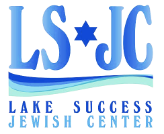
Triennial Reading Cycle 2
For Year 5784
Parshat Yitro
Exodus 18:1-20:23
February 2-3, 2024
*Because this portion is brief and includes the Ten Commandments, we read the entire portion.*
Parsha Highlights:
► Moses reconciles with his family: In order to focus on liberating his people from Egypt, Moses sent his wife (Tzippora) and children back to Midian, Tzippora’s ancestral home. Now that Moses has led b’nai yisrael to freedom in the desert, he re-unites with his wife, children, and father-in-law Yitro. (Jethro is his English name but Jethro reminds me of the Beverly Hillbillies. Yitro was definitely not part of the Clampett family...) We might argue that as leader, Moses should have kept his family in Egypt, to set an example for the other people. However, were we in Moses’ shoes, chances are we would have done similarly. Due to the unusual circumstances, Moses had to be a 24/7 leader. Knowing that his family was safe and secure would enable him to focus entirely on leading his people to freedom. As I have always cherished my role as a father, I believe that most of us can work hard and still make time for family. Moses was the exception; I would not elevate him as the model to which working parents should aspire.
► Yitro, High Priest of Midian, offers invaluable, practical guidance to Moses: As Yitro makes his rounds through the Israelite camp; he observes how Moses supervises all judicial matters without any assistance. Drawing from his vast experience, the wise Midianite advises Moses to seek assistance! Yitro knows that present conditions will lead to burn out – of Moses and his nation. Yitro therefore advises Moses to appoint judges over clusters of people, to make justice more expedient. His advice is remarkable for two reasons. First, Yitro’s system of jurisprudence was the forerunner of today’s judicial system of district courts, appellate courts, etc. – a system intended to expedite judicial matters and to enable citizens to receive justice in timely fashion. Second, the fact that Moses and the Israelites took instruction from a Midianite priest suggests how Judaism has always welcomed invaluable ideas regardless of their source. Throughout Jewish experience, Jewish communities were influenced by the language, the philosophies, and the general culture of the communities where they lived. From how we structure our government to what music we incorporate into our ritual, Judaism has borrowed whenever such “foreign influences” were beneficial to Am Yisrael.
► Israel prepares for the first great national theophany: The encounter at Mt. Sinai between God and the people. At Sinai the people receive the Torah. God charges the people: You will be to Me a kingdom of priests and a holy nation.
The experience at Mt. Sinai is known as Matan Torah; the Giving of the Torah. That experience is not referred to as Receiving of the Torah because each Jew receives and responds to the Torah in individual fashion. There are Jewish theologians who argue that at Mt. Sinai, Israel received all the details of the Torah. Others argue that they received a general framework; that the details depend on individual or communal interpretation. Some suggest that God was revealed at Mt. Sinai, without specific details. Still others argue that the Sinai experience was the first in an ongoing series of God/Israel encounters, meaning that Judaism evolved over the centuries according to interpretations of the era. Finally, some argue against any Divine authorship of the Torah. The Torah, therefore, represents the collective wisdom of the Jewish people. We experience God through observing commandments; God is born out of our own experiences and behaviors.
What we believe helps to determine our practice. If we believe the Torah totally represents Divine authorship, with little human component, then our ability to change and re-interpret is more limited. If we believe that the Torah reflects our human understanding of our encounter with God, then we have more flexibility to re-interpret Torah and Jewish practice according to the needs of each generation. Orthodox, Conservative, Reform and Reconstructionist ideologies reflect our interpretation of the ongoing relationship between God and the Jewish people. People who identify as Reform Jews, for example, may identify as such because they claim to be more casual in loyalty to ancient rituals or communal obligations which seem anathema to our age. However, every branch of Judaism, regardless of disparity in practice, maintains a strong commitment to the principles of prayer, Shabbat/Festivals, Jewish education and Jewish observance, even if the details vary from one Movement to another. How we identify and practice as Jews therefore should reflect not just what we do, but what we believe. Our belief system traces its roots to the experiences at Sinai.
Haftorah Reading: Isaiah 6:1-7:6, 9:5-6
Our Haftorah Includes a different type of theophany: the call of Isaiah to God's service. Isaiah was a prophet who lived during the years before the Northern Kingdom of Israel was destroyed by Assyria. He has a vision in which he speaks to God; yet, like Moses, he believes he is unworthy of carrying God's message to the people. Isaiah eventually accepts his calling and a mission to reform the people – otherwise the nation will physically and spiritually disintegrate.
Unique to today’s Haftorah: Isaiah hears seraphim – angelic beings who attend to God – acknowledging to each other the greatness of God. They express God's greatness through words incorporated into our liturgy and familiar to most of us:
KADOSH, KADOSH, ADONAY TZIVA'OT
M'LOAH KHOL HA'ARETZ KVODO:
HOLY, HOLY IS THE GOD OF HOSTS;
THE ENTIRE WORLD IS FILLED WITH GOD'S HONOR.
During the Kedushah section of the Amidah prayer, we lift up our heels when we say these words, as if to say that we wish to stand next to the seraphim during such an intimate moment of praise.

